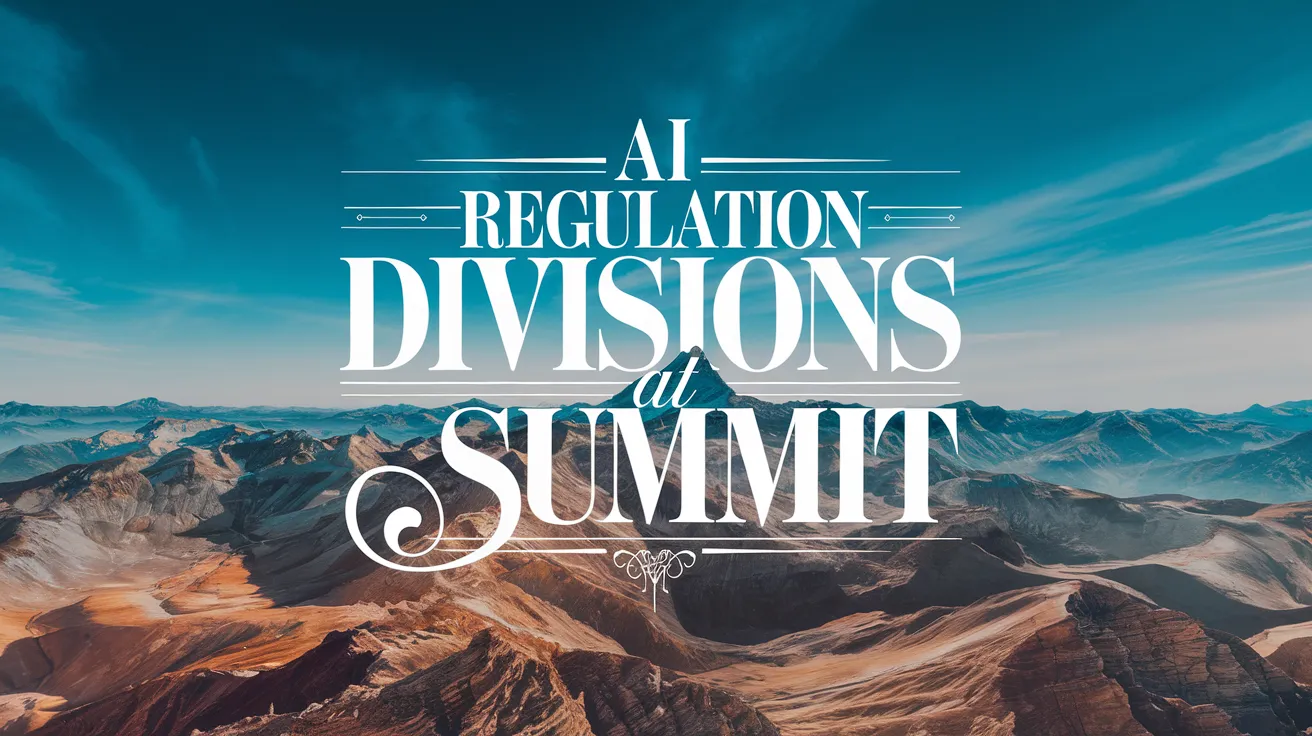AI Regulation Divisions at Summit

World leaders, tech CEOs, and academics convened in Paris for the AI Action Summit, aimed at fostering a common approach to artificial intelligence through the sharing of science, solutions, and standards. However, rather than presenting a united front on the future of AI, the event underscored the growing divide between Europe and the US regarding technology regulation.
The Summit
The summit was notably kicked off by French President Emmanuel Macron, who shared a montage of AI-generated deepfake videos of himself on social media. This humorous introduction transitioned into more serious discourse as US Vice President JD Vance addressed the gathering, criticizing the European approach to technology regulation. Vance argued that excessive regulation could stifle innovation within the transformative AI sector, emphasizing the need for American AI to remain untainted by ideological bias and censorship.
Macron, alongside European Commission President Ursula von der Leyen, expressed a commitment to investing in AI and reducing bureaucratic hurdles within the EU. Despite this, Macron reiterated the necessity of regulation to cultivate public trust in AI technology, warning that without it, societal rejection could ensue. Notably, the US and UK refrained from endorsing the summit’s final statement, which called for AI to be inclusive, open, ethical, and safe.
US vs. EU Regulation
Micheál Martin, Taoiseach of Ireland, highlighted a critical need to strike a balance between innovation and regulation, cautioning that Europe could lag without proper oversight. This complex regulatory environment was further amplified by President Donald Trump’s commentary regarding the launch of the Chinese AI model DeepSeek, which he deemed a wake-up call for US tech firms. Trump’s administration had already started retracting AI safety regulations, which he described as obstacles to American innovation.
In contrast, Europe enacted the EU AI Act in August 2024, imposing strict regulations on high-risk AI systems. John Clancy, the CEO of Galvia AI, welcomed the summit as essential for Europe to enhance its global AI positioning but critiqued it for feeling reactive to the challenges posed by the US and China. He articulated that the US approach appears centered on rapid financial investment and geopolitical competition, while Europe risks over-regulation before practical applications of AI are properly deployed.
Ireland’s Strategic Role
Clancy believes that Ireland holds a unique position to mediate the regulatory discrepancies through fostering innovation and collaboration between the US and Europe. He suggests that Ireland could harness its existing data infrastructure and develop initiatives equivalent to CERN for AI, aimed at unifying various stakeholders and driving research and development.
The Risks of Unchecked AI Development
As discussions shift towards regulation, it’s essential to acknowledge the grave risks associated with unbridled AI advancement. Experts, including former Google CEO Eric Schmidt, warned that unchecked AI development could lead to dire consequences, including the potential for misuse by hostile states or terrorist groups. Additionally, concerns about disinformation, job displacement, discrimination, and cybersecurity threats emerged as critical issues needing attention.
Raluca Saceanu, CEO of Smarttech247, highlighted the ease with which cybercriminals can exploit open-source AI models, presenting a clear call for governmental action to pair AI innovation with robust cybersecurity strategies to protect sensitive data and critical infrastructure.
Reflections on the AI Action Summit
The AI Action Summit raised crucial inquiries regarding its success, particularly about the stark divisions in AI governance. While significant commitments to advance the technology were evident, the fragmented regulatory landscape portrayed at the summit indicates that achieving a cohesive global framework for AI remains a significant challenge. The rapid evolution of AI technologies warrants continuous vigilance, and nations must navigate their strategies carefully to maintain competitive advantage while ensuring safety and accountability in a rapidly changing landscape.